Designing, building and installing an off-the-grid photovoltaic system - Let's talk about it
I am always pleased to find time to add my own contributions to the blockchain and I think it's high time to bring you something new. Between going to the @SteemSTEM meetup, working out @arcaspace Steem onboarding, reinstating myself as a @TheSteemEngine full member and working a fulltime job, I still want to take care of my other issues.
I am not planning on becoming off-grid any time soon, but I hate to know that coal or gas is being burnt for my own needs. So, to have a clear conscience and some benefits, I am thinking of the possibility to reduce my dependence on the grid.
This being said, I have already reduced a lot of my thermal and water needs, so what remains is the electricity needs. But I want to buy Steem so badly, how would I afford to also install a photovoltaic system, while still keeping the rest of the finances stable? We have to ask the right questions.
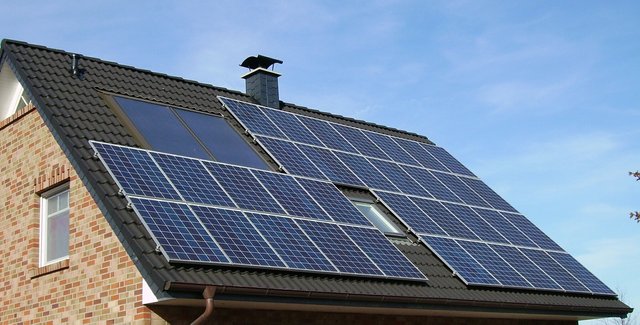 Solar panels being mounted on a slanted roof. It even adds a little to the thermal protection in the summer, because some of the energy is absorbed by the panels. Source
Solar panels being mounted on a slanted roof. It even adds a little to the thermal protection in the summer, because some of the energy is absorbed by the panels. Source

Minimum needs and scalability, cheapest reliable system and outsourcing the installation costs.
Minimum needs
| Item | Daily consumption | Description |
|---|---|---|
| Gas Heater | 0.4 kWh | Whole year estimation divided by number of days |
| Water Pump | 0.5 kWh | 1 hour - 240L - 500W |
| Lighting | 0.7 kWh | 10 LED - 8W for 5 hours and 9 LED 3W for 10 hours |
| Dishwasher | 0.1 kWh | Negligible |
| Washing machine | 0.7 kWh | Usual setup - with centrifuge. |
| Computer | 3 kWh | 500W for 6 hours.GPU to the max for IBM's WCG and Boinc |
| TV | 0.1 kWh | Used at most for 40 minutes a day. |
| Floor Heating | 0.1 kWh | Whole year estimation - heating toes only during winter |
| Oven | 1 kWh | 2000W for 0.5 hour daily |
| Microwave oven | 0.1 kWh | Negligible |
| Mind control emitter | 0 kWh | Either very efficient or doesn't work, instructions unclear |
This puts the house usage at 6.7 kWh per day. Common sense would say to add a 30% margin of error to account for battery losses and for future small upgrades to the system. This would make the needed system have around 8.71 kWh.

Scalability
In order to allow the resize of the system according to the needs, one also needs to take into account the scalability of the system. Can new parts be added? How will the system look like in the end? How will it be used?
In the figure you can see the basic schema of a photovoltaic system. We already know how photovoltaic energy is produced since SteemSTEM has already funded a lot of renewable energy articles in the past.

The Charge Controller
What we need to have a basic system is a charge controller, which regulates when the solar panels charge the batteries and when the system is turned off, either to prevent overcharging or for example at night, in order to prevent energy losses. While a charge controller in a complicated system si very important, for the regular system or a new install, new technology is so simple and easy to use that the market is flooded with plenty of 15-20$ charge controllers.
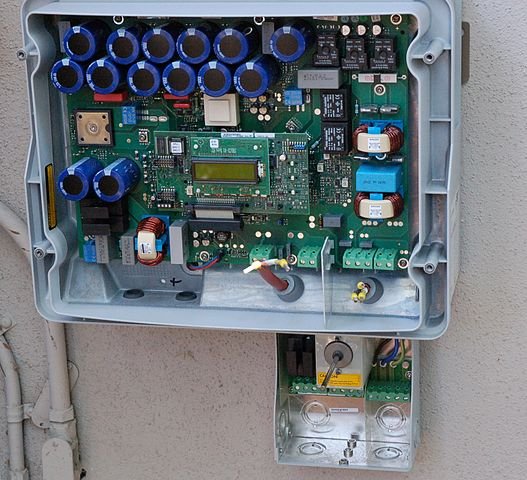 A very simple inverter, there is nothing high-tech about these kinds of systems anymore. Source image by Russell Neches
A very simple inverter, there is nothing high-tech about these kinds of systems anymore. Source image by Russell NechesThe inverter
The inverter helps convert the DC current generated by the solar panels into AC current which is needed by the electrical network and almost all of the appliances in your house. Some of the inverters come with extra protection or advanced load balancing but what I've seen through the markets is that the systems are slowly becoming more mainstream as cost dwindles due to increased usage. And probably nobody needs state of the art load balancing or perfect current sine waves anyway. This means that cost can drastically be cut from 1000$ a few years ago for a 2kW inverter to just 150$, or even 80 $ if you trust the real no-names of the industry.
Batteries
As we are designing off-grid systems, we don't have to apply for any special kinds of permits and memberships that come with the lawful energy production as a partner of the local energy company. This means less time lost trying to get signatures and keeps you more in control of when you produce, how much you produce and you get to use your own energy instead of selling it out for peanuts.
The downside is that you need to buy batteries. Surely they must cost a fortune and be changed every year or so, right? Well, actually no. Because when we are choosing the batteries, we are choosing deep cycle batteries which are engineered especially for solar panels and solar energy storage. While some of them might be LI-Poly (the most expensive ones), I will recommend you choose the cheaper and reliable FLA, VRLA and more exactly Gel batteries as they are the most cost-effective solution right now. If you want to read more about batteries, go to @olajidekehinde's deep cycle battery guide.
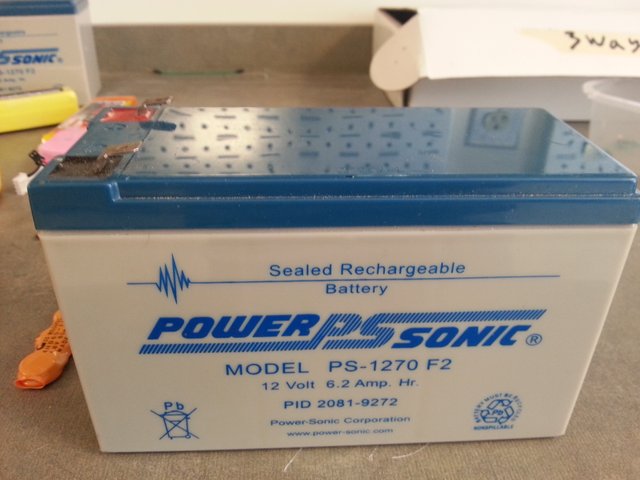 A small deep cycle battery. Source image by Tntflash
A small deep cycle battery. Source image by TntflashThe cost of such a battery is not very small, but it's not that great, especially if you don't want to build a huge system from the start. Batteries start from 120$ for an energy rating of 55Ah (~0.6 kWh), but I would suggest you go with 150Ah ( ~1.85 kWh) at 160$.
The prices are informative, it's just so you can see that the cost is not that great after all.
The electrical network
Now, if you are like me and you have designed your house from the ground up, you probably have also included a second line of wires in the walls so you can use your own energy interchangeably. But even if you didn't, there's no problem, since you can implement a load switch, a smart switch to change between your network and the public energy network.
This smart switch could even be connected to the internet and you could control it from your phone, but to keep costs low, the basic implementation would be a changeover switch to go from Position A to Position B when there is no current in Position A (when the solar system is empty) and return to Position A as soon as there is some current there (when the solar system is ready to be used, either charged fully or partially, depending on what the invertor decides).

The actual cost for a cheap entry-level system starts at around 1730$, a system which produces up to 10kW per day so it can take the 8.71kW per day we calculated we need in the first table. But you can do it even cheaper if you like to get your hands dirty.
Let's see the data:
| 6x Solar Panel | 260W | 960$ |
|---|---|---|
| 1x Inverter | 3kW 60A | 400$ |
| 2x Deep Cycle Battery | 300Ah | 320$ |
| solar cable | 20m | ~0 |
| 4 connection slots YMC4 | ~0 | |
| slanted roof connectors | 50$ |
How to even further reduce costs?
By cutting on the most expensive parts first. And logic. No, there will be NO CUTTING ON LOGIC, I mean using our logic. It's clearly harder for us to create an inverter from scratch (although it's possible) or to work with lead and create our own acid battery, but what if we try to create the photovoltaic panels ourselves?
Everyone can do handywork but not everyone can create photovoltaic cells. Do you know why photovoltaic panels are the most expensive? It's because they weigh a lot and they are constructed in China (most probably).
But what if we were to buy the most difficult to create part, the photovoltaic cells, and just construct a case ourselves?
PART 2: The DIY of our adventure
Onward to AliExpress
As a matter of fact, I already ordered and had these delivered to me almost a year ago, just before I discovered Steem, which turned out to take a lot of my time.

Screen capture of my order from December 2017.
Wait, what? 23$ for a 170W "panel"
Practically a steal, thanks Jack Ma for establishing what I call the best store for tech geeks around the world.

 A conductive pen, a bus wire (to connect rows of solar cells together) and solar wire (to connect cells in rows).
A conductive pen, a bus wire (to connect rows of solar cells together) and solar wire (to connect cells in rows).
They also deliver these tools, for soldering the solar panels in series and in paralel and a conductive pen to help with the quality of the connections. These might sound like high tech, but once you start soldering the first few, you will realise it's just like back in physics class and you don't need to be over 14 to complete this task :).
You will probably need to also buy a 50-60Watt soldering iron, not more or you will burn through everything, leaving holes instead of solders.
This should be cheap in itself and will open your horizon toward more soldering activities (just as having a hammer transforms everything into nails), you will solder practically everything in the weeks to follow :D
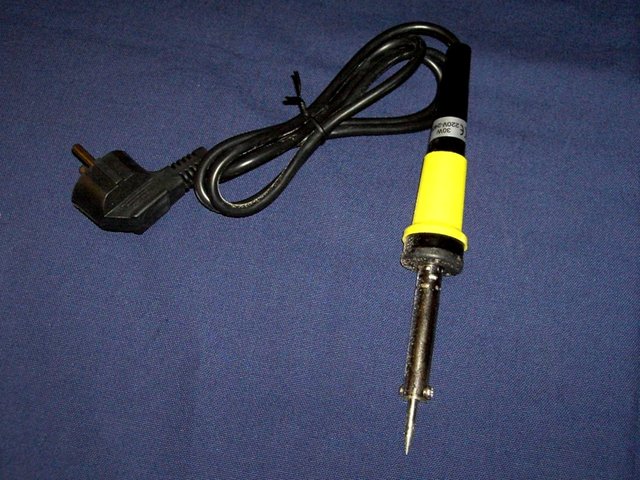 An example of a 10$ soldering iron. Source
An example of a 10$ soldering iron. Source
I also bought a multimeter from AliExpress. I chose one of the cheapest with a circuit-making sound, so if I connect the solar panels correctly, I can instantly test the quality of my work after each solder and not take everything down at the end. Time is money.
Then, I was lazy and I preferred to watch a guide online. Youtube found me 5 DIY videos which I spent 30 minutes watching and then I was good to go. While those videos are not free to redistribute, I have found a good one that can:
Then you will also need a clear glass pane to make sure that the cells get the maximum of the solar rays. I don't remember how much I paid for it, but it was under 7$ or something like that, since it's the cheapest of glass, you don't need UV protection, just the basic sheet of glass.
For the frame, in order to keep it cheap you can use aluminium or PVC (I am a big fan of PVC as I told you in my previous engineering videos). I have bought a DIY mosquito net protection kit from a household shop for under 15$. It basically consists of a PVC frame with plastic corners you can hammer in, after you cut the frame to the desired dimensions.
As an adhesive and for the back of the panel you would need an insulation gel in the form of a silicone or epoxy paste.
As I was taken on by Steem, I had little time for my passion of DIY, so my project was paused. I will gladly resume it as soon as I have time and I will be able to tell you more about the silicone paste or whatever solution I will use.
Just a panel won't be enough, so I am planning of ordering more cells, maybe try out some of the other technologies which went more affordable this year, like the already waterproof solar cells which require no pane of glass on top.

Conclusion
Science is a very fun way to create things. By using logic and keeping an open mind to all channels of information, you can cut the cost from up to 6000$ (a similar official photovoltaic system if you buy it from a reseller) to 1700$ if you assemble it yourself, and to 1350$ if you engage in some light DIY. Prices are informative so if you are living in some parts of the world where import taxes are low, then you will pay even less. @mobbs could probably get it almost free in China.
There are always ways to reduce costs and to keep a personal project worth it. Finding equipment to create things yourself is also a fun thing to do and will open the doors to a new way of spending quality time with your family, even. And you get to show off your magic skills :D
As time will pass, the markets will increase and so will competition, driving the prices lower and lower. Technology and automatization are also contributing to the low cost of technology. I remember when solar panels were 10-15 times more expensive, so I am sure that the prices will halve in a few years. But don't necessarily wait for the prices to fall, buy a small system now and scale it upward with time.
This will also give you a lot of self confidence and you will feel more invested in everything you do yourself, feeling a part of everything you contribute to, which is a nice feeling at the end of the day.

Sources and further reading:
https://steemit.com/static/search.html?q=photovoltaic When is the last time you actually searched Steemit for general info?
https://steemit.com/stemng/@olajidekehinde/teardown-of-solar-power-system-design-and-installation A great solar system installation from a steemit user.
This is the video I followed when I first started the project.
https://mocioi.wordpress.com/2010/06/21/cum-se-face-o-plasa-de-tantari/ Pictures of the PVC frame and accesories:
https://www.rapidtables.com/calc/electric/index.html Don't forget how to calculate your electricity. Letting someone else do the calculation for you will likely get you to overpay for something.
https://www.aliexpress.com/wholesale?catId=0&initiative_id=SB_20181012041816&SearchText=solar+panel - check AliExpress for solar panels and accessories.

Don't forget to drop by #SteemSTEM, the place where science is being done daily. Don't be a stranger to science and we will always listen to what you have to say! And if you want to contribute with original ideas, we'll even help you do it. Ask me and I will answer every single one of you how to improve your blogs here.

Contribute STEM content using the #steemstem tag | Support SteemSTEM authors | Join our curation trail | Visit our Discord community | Delegate SP to SteemSTEM
Convenient Delegation Links:

I also didn't forget my friends @TheSteemEngine.
.gif)
Cheers to everyone following and reading! Engage more on Steem and your opinion will get voted and your account will get noticed. Everyone likes articulated people :D
Wow. I actually read this about 3 hours ago, and promptly fell down the rabbit hole. I was looking for some thing else and realized I hadn't voted or commented on your post. Better late than never, I guess.
It's a terrific article with great resources cited. Thank you for it. I am a 'value shopper' and really like the DIY it part of the project.
Very informative, in the complex I am in at the moment we arent allowed to add solar panels, but it is something I plan to look into when I move when I retire in a couple of years
Congratulations! This post has been chosen as one of the daily Whistle Stops for The STEEM Engine!
You can see your post's place along the track here: The Daily Whistle Stops, Issue 280 (10/13/18)
I see some things in your post I see differently but overall pretty decent for a basic system. When we went to total solar off-grid living 6 years ago we looked into building our own panels and found so many reasons why not. It is not as easy as one thinks and takes a lot of time. We just upgraded our system this year with new batteries and 5 more panels. I am Canadian and the panels only cost me for 320 watts, approx. 200.00 a piece. Our batteries, of course, are industrial deep cycle golf cart batteries at 210AMH. and cost us just under 200.00 each. My figures might be a tad off. Will correct when my husband gets home. A system hooked up to the main grid with solar as a back up is a different system and the type of MPPT may be different. The switch box is a must for sure. We only consume on average 1kw of power a day. In the heat of the summer more but then we have lots more sun for power. For us, it is about 2 things, conservation, and management. We do not run more than 1 heavy appliance at any one time. Water pump to the well gets turned on manually when water pressure is low. We use all LED lights. We do not leave anything turned on that is not being used. So a system can cost less simply by cutting back power and managing. Harder to cut back when you are on the grid and everything runs on its own cycle such as water pumps, fridge, freezers etc. Anyway, I could write a whole book so I shall leave it there. I do commend you @alexdory for considering to reduce and for trying to be a part of the solution. For sharing this basic information for those considering as well, good job!
I didn't want to keep it too technical since not many here on Steem are that technical. The idea is to get regular people to invest in such a system and to prove it's not a Gargantuan task.
But please do tell me the flaws, so I can fix them :P What is a guide without feedback, right?
You got a good price for the batteries and the panels. Are they made in Canada?
Congrats for low consumption. I have written a series on off-the-grid before, you can just scroll through the articles, I will try to add all the articles in a future article, just to keep them categorized.
Sadly I am using 5-6 kWh per day, which I thought was a good figure until now :D
I guess I could do more to reduce.
Thanks for dropping by.
haha, I was thinking of my post and came back to change it and saw you already read it. I changed the word flaw because that was an incorrect word, my apologies. I think it was more a difference of opinion is what I should have said of which I shared such as easier to buy now that prices are so low. Yet if people's budget is extremely low creating your own panel is an economical way to go. I had a friend who did that and found it so tedious and difficult she regretted wasting her money and finally bought panels. Even though one lives on the grid one can learn to be aware of power usage and reduce where one can. One can learn a bit on management so one can reduce or be more prepared in a power outage. A generator does not always run everything in the home unless one bought a huge expensive back up generator. Our first system had a 3000-watt inverter and we switched to a 1500 watt sine wave. ( you are correct, be sure what you buy, some Chinese sine waves are junk) Grid power is sinewave. Our inverter determines the quality of power if you will. For what ever reason, I only briefly looked into it, computers, TV's etc run more effieciently, with less issues on sinewave. We bought ours 2 years ago and was like 800.00 possibly a lot cheaper now. Of course a 3000 watt sinewave would cost more. Typically you would want 3000 or more because one major appliance like a toaster can use 1500 watts. In the summer when we have sun power the freezer (100 watt unit)fridge (250 watts) watter pump (800 watts) need to run more often and we can consume on average 3000 watts in the day. So for a house on the grid 5-6 kWh per day is not bad. Possibly could get it down to 4000 watts per day. Our solar panels came out of Calgary, AB but not sure where they were manufactured. Our town provided batteries, again not sure of the manufacturer, I believe the USA. I can look into it if interested. It is a pleasure to talk with you, @alexdory. Good to see you have other articles on this topic. I feel it is very important so much so that this winter I am writing a book.
Hey @gardengranny
Here's a tip for your valuable feedback! @Utopian-io loves and incentivises informative comments.
Contributing on Utopian
Learn how to contribute on our website.
Want to chat? Join us on Discord https://discord.gg/h52nFrV.
Vote for Utopian Witness!
Interesting. I installed 3kw on grid system few months ago, interestingly enough 4 inverters died (some crappy Aunisol models), the company I bought it from finally changed them for SolarMax3000. It created 800kw in 1month and 20 days up till today. My bill for electricity still hasn't been reduced. Here is my post from long ago about it.
https://steemit.com/steem/@moon32walker/solar-panels-powered-by-steem
On grid systems in Europe are regulated in the following way:
You produce energy when the conditions allow it and you feed the energy into the grid right-away. The energy company buys your energy at 1/3 or even 1/4 of the price you pay for the same energy from them. You don't use your energy, you are unable to.
This is because the EU is a shmuck and lets its people be bullied by the energy companies. You can never break even if you use on-grid systems. I guess in the US or other places, the rules are similar.
This is why I presented an off-grid system, it is the only one breaking even (currently in 7-10 years, dropping from 15 years a few years ago). Maybe in 5 or 10 more years the price of renewable systems like wind or solar will drop enough so that you can break even in under 3 years, which is what extended warranty can offer. This will make more people invest in it.
Chiar ti-ai pus un sistem off-grid de 10Kwh asa de ieftin? :)
Nu, am spus ca nu l-am terminat ca m-a acaparat Steem-ul, dar saptamana asta sunt operat si am 7 zile libere, o sa fac niste lipituri la celalalt panou. Nu am cumparat inca toate componentele, deci nu e functional, dar da, nu vad ce s-ar putea intampla sa nu il termin in curand. Doar asta ii mai trebuie casei ca sa fie independenta energetic :)
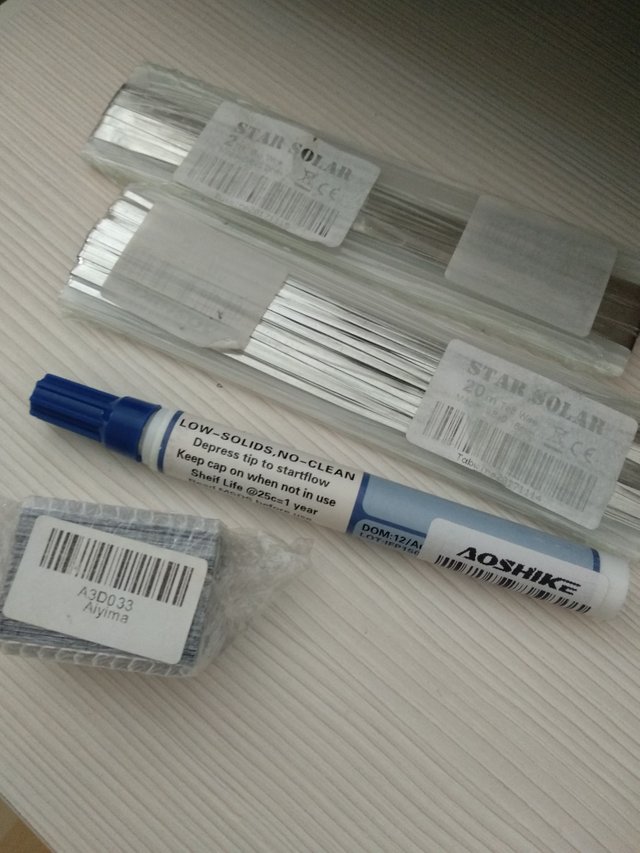
Cutiuta aia mica sunt celulele solare. In articol am preferat sa pun poze de la producator. Fiind asa mic si ieftin pachetul nu este nevoie sa platesti nimic la import.
Foarte tare, eu pot doar sa visez la asa ceva :)
As an engineer, I'm always excited when I see that someone used his knowledge to improve his everyday life. Nice solution Alex! :)
I always like to see engineers here.
Steem has the opportunity to be so much more than it is now and I hope that by bringing valuable people, it might be just that. More people means more ideas, and if you see who was the most successful on Steem, you will see that the people building their own platforms won in a detached way.
Maybe we will need a crowdfunding engineering system so engineering projects could be financed and implemented here.
We just need to reach critical mass, I think this could happen soon if we gather and try to find solution to get ourselves closer to that critical mass, otherwise we will bottom out slowly.
Exactly!
I think that now is the right time for meeting great people on Steemit, while prices are low and there aren't many gold-seekers and trash around. People you can met now are actually the ones who understand importance and future of this technology and they are not here just for the quick cash.
Who knows where crowd of well connected and smart people can take us all :)
Nice solar system,we also run solar energy on our house and it is reliable green energy.
Does Ali Express do wind turbine parts? This is amazing info. I am planning to build my own home (I have been planning this for decades), but in Scotland we have about two months of sunshiny weather in a good year. We do get a lot of wind, although I'm aware that wind turbines have their downsides, including bird deaths.
It does. I didn't research a lot since I don't have a big enough yard to correctly fit a wind turbine: 20 meters from all the surrounding buildings and a 5m tower + rotor diameter.
A wind turbine like that is hard to break down into pieces. Brand new is about 6000$. What you can get on AliExpress would be heavy and big in volume so will cost more to import.
But if you read my power generation on Mars article, you might be able to create a DIY vertical axis:
I will write about it in a future article, just as an exercise in DIY.
You can get a cheap dynamo made in your own country and mount it on a pole, then use plastic, cloth or sail material to weave the arms tied on bearings.
A little more complicated but there are examples of others doing them. I had a friend who managed to break the main pole due to the very high rotation speed :D
If you do want a horizontal axis classic one you need to have access to a big 3D printer to print the rotor wings. Having those wings as light as possible is key to getting high speed rotation.
That sounds vaguely do-able, even for a non techno-minded person like myself! One advantage would be that this kind of thing might be easier to achieve planning permission for, and not too much of an expense if permission wasn't granted.
There are a few "maker's labs" in my town where you can use 3D printers - not sure how big they are though. I'll look out for your article on this.
Here you go!
A version of it: https://www.instructables.com/id/Building-a-Vertical-Axis-Wind-Turbine-VAWT-/
Thanks for this! It never ceases to amaze me what you can find online :)